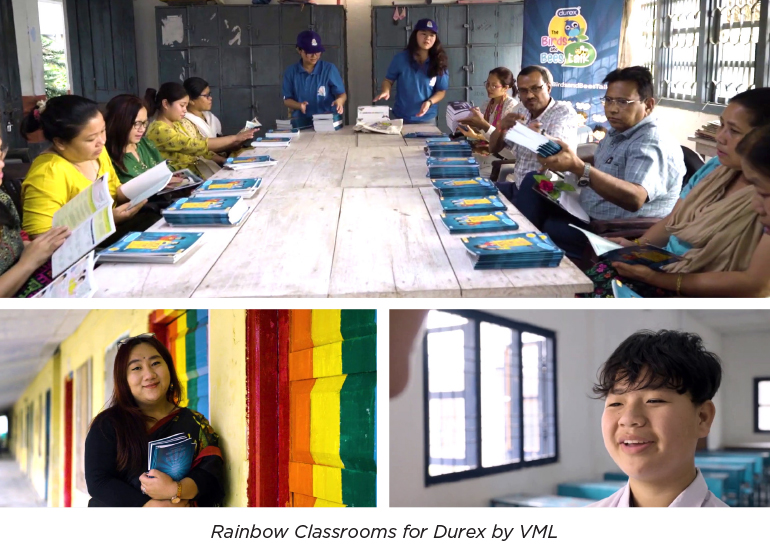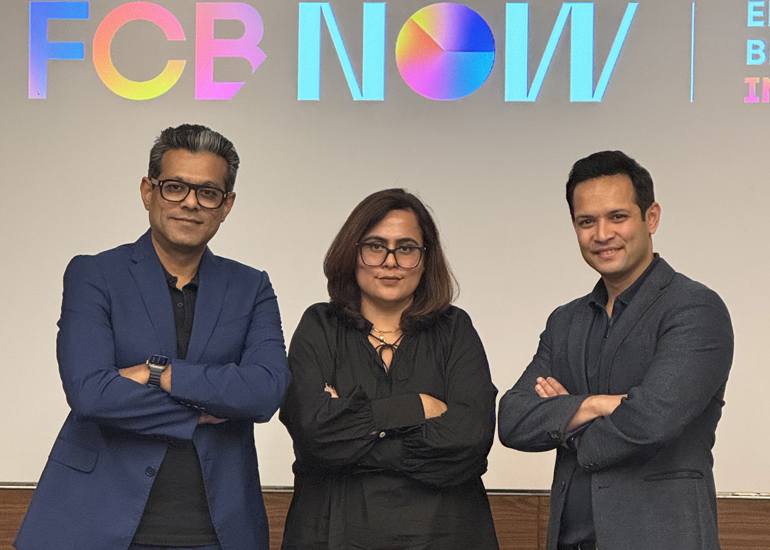In 1991, Kama Sutra opened the floodgates of sexual content in advertising. Its condom advertisement created by Lintas, featured Pooja Bedi and Marc Robinson, left little to the imagination. The unsuspecting Indian consumer, caught in the middle of a historic economic globalization catapulted the brand and its ad into controversy. It was a different time. But then again, only a decade ago, a prominent union minister sparked controversy when he appealed via an article that sex education be banned in Indian schools. Moreover, a few years prior, there was an uproar against a scheme for adolescent education programmes in the school curriculum promoted by the National AIDS Control Organization (NACO) and the Ministry of Human Resource Development (MHRD).
As far as you go back, you will find enough examples of how unprepared and unwilling Indian society has been to discuss sex and sexuality, let alone teach kids about it. Unfortunately, the scenario remains the same even today.
People want to prevent kids from any mention of gender identity, sexuality, and sexual wellness. However, every few years comes a wave of transformation that opens up society a little and things change, and advertising has been playing a key role in it. This time, Durex made an effort in this direction with the ‘Rainbow Classroms’ campaign. By educating teachers and marking classrooms with rainbow doors, the initiative fosters inclusivity and acceptance, supporting students to express themselves freely without fear of judgment. Created by VML, the campaign aims to create a safe space for kids struggling with gender identity within their schools. Detailing the initiative, Rohan Kumar, Group Creative Director, VML India shared, “The work on this campaign started in May last year. The brief from the client was pretty straight forward, they wanted to focus on smaller towns in India. From there our quest for a story began which happened to be of a kid who was getting bullied at school because of their gender identity. The other students were not allowing them to use the school washroom. This little story ignited this whole campaign.”
Detailing the initiative, Rohan Kumar, Group Creative Director, VML India shared, “The work on this campaign started in May last year. The brief from the client was pretty straight forward, they wanted to focus on smaller towns in India. From there our quest for a story began which happened to be of a kid who was getting bullied at school because of their gender identity. The other students were not allowing them to use the school washroom. This little story ignited this whole campaign.”
Kumar admitted that when he started working on this campaign, he was pretty ignorant about the issues kids from the LGBTQ+ communities face. With the help of his colleagues and several partners associated with this campaign, he and his team were able to crack the code of creating something that is not very ad-like and can have an actual on-ground impact.
“Today, we have created Rainbow Classrooms in over eighteen thousand schools across north-east India and Maharashtra. The next step is Delhi and slowly we want to cover the whole of India with this. We are making teachers the ambassadors who are creating safe spaces for kids in their schools after getting training from our modules,” he elaborated.

But Is India Ready For This?
It is a bold subject and has not been touched upon on this scale in the country yet. Talking to kids about sexuality, therefore, made it quite difficult for the team to kickstart this campaign, but slowly more people started joining in. Kumar feels that all this was a matter of one person speaking up.
We have seen this courage working out in several other content areas related to sex education via advertising. Be it the ‘Choone Se AIDS Nahi Hota’ campaign from the 80s where Shabana Azmi made this point clear by sitting close to a little girl playing an AIDS patient in the ad, or more recent campaigns on menstrual hygiene in school-going girls by brands like Whisper. The former made a very poignant commentary subtly, even kids can get AIDS. It is an indication of the times when such campaigns were created. On the other hand, Whisper’s #KeepGirlsInSchool has been actively talking to school-going girls, as young as eight years old now, about menstruation, another taboo topic related to sexual health and wellness. Speaking about the campaign, Girish Kalyanaraman, Vice President and Category Lead – Feminine Care, P&G India stated, “This advertising which enables category and brand building is crucial because research indicates that one in five girls drops out of school when they hit puberty, which hampers their progress, prospects, and creates a glass ceiling. Moreover, it is crucial to ensure young girls and women understand the negative health impact of using materials like hay, cloth, and rags during menstruation, which increases the risk of diseases. Therefore, we find menstrual education to be imperative and of utmost importance, and that’s exactly what we have continued to do with our brand Whisper.”
Speaking about the campaign, Girish Kalyanaraman, Vice President and Category Lead – Feminine Care, P&G India stated, “This advertising which enables category and brand building is crucial because research indicates that one in five girls drops out of school when they hit puberty, which hampers their progress, prospects, and creates a glass ceiling. Moreover, it is crucial to ensure young girls and women understand the negative health impact of using materials like hay, cloth, and rags during menstruation, which increases the risk of diseases. Therefore, we find menstrual education to be imperative and of utmost importance, and that’s exactly what we have continued to do with our brand Whisper.”
What Has Evolved?
It is just the beginning of brands involving kids and young adults in campaigns related to gender identity and sexual health & wellness. There has been a gradual shift in the narrative styles used and the intensity of topics touched upon. For example, in 2018, Flipkart came up with the #GenEqual campaign created by Dentsu Webchutney. It spoke against stringent gender norms imposed on young kids. Speaking about the same PG Aditiya, Founder, Talented (who was then with the agency) shared, “When Binaifer Dulani and I worked on that campaign, the lens to view gender and gender identity was very binary. And that became the core of the discussion there – how to raise kids without gender roles. I think the campaign became successful and remains relevant even today because of how Kopal (Nathani) very sensitively directed it.”
For example, in 2018, Flipkart came up with the #GenEqual campaign created by Dentsu Webchutney. It spoke against stringent gender norms imposed on young kids. Speaking about the same PG Aditiya, Founder, Talented (who was then with the agency) shared, “When Binaifer Dulani and I worked on that campaign, the lens to view gender and gender identity was very binary. And that became the core of the discussion there – how to raise kids without gender roles. I think the campaign became successful and remains relevant even today because of how Kopal (Nathani) very sensitively directed it.” Elaborating more, Kopal Nathani, Founder & Director, Superfly Films noted, “The campaign came straight out of my heart because I am also a mother. And just the basic struggle to find something for my daughter that is not pink was making me feel the intensity of how gender-coded our society is. Therefore, we partnered with real parents and kids to create that campaign. Also, we told it from the kids’ viewpoint, setting up a very innocent quest. We highlighted how by following gender norms in our parenting we dilute that innocence.”
Elaborating more, Kopal Nathani, Founder & Director, Superfly Films noted, “The campaign came straight out of my heart because I am also a mother. And just the basic struggle to find something for my daughter that is not pink was making me feel the intensity of how gender-coded our society is. Therefore, we partnered with real parents and kids to create that campaign. Also, we told it from the kids’ viewpoint, setting up a very innocent quest. We highlighted how by following gender norms in our parenting we dilute that innocence.”
On being asked if the Indian society is yet ready to accept even more nuanced narratives on gender identity and norms, Nathani quipped, “We are yet a long way from getting into it. I feel there should be continued big-scale efforts for society to change. And I agree that every effort is a good effort, we need to be more dedicated to it. It will, therefore, take some time.”
Creativity can be the weapon of choice here. It can open new channels for sex education, without offending society or being untasteful. Advertising can do wonders, in more ways than we think it can.






















